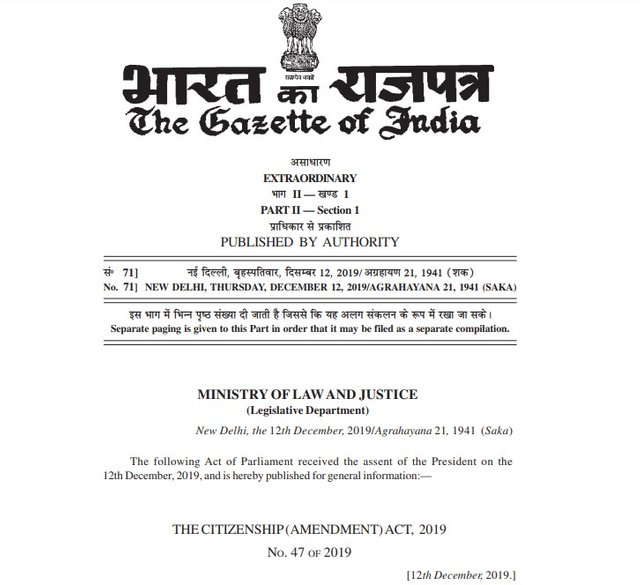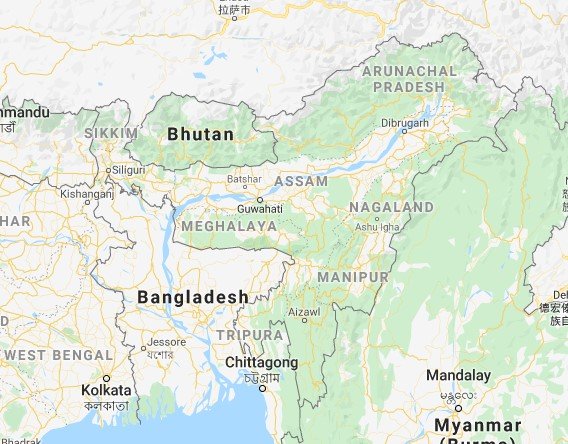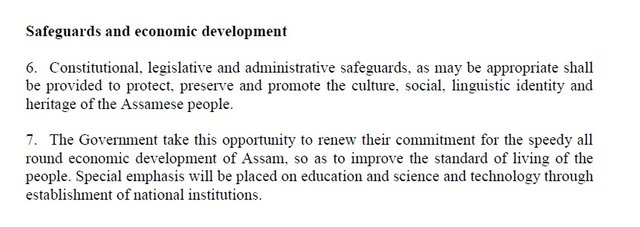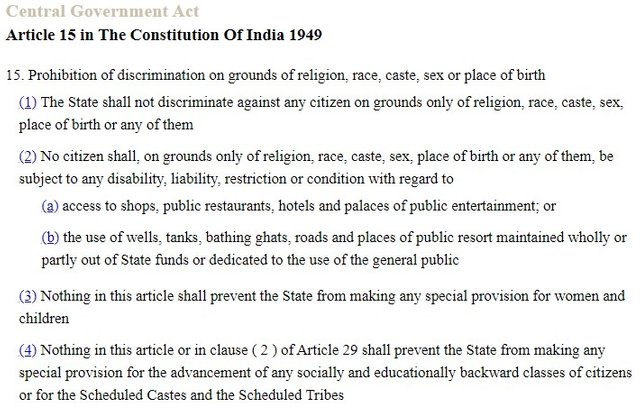Indian Citizenship Amendment Act 2019 – Debunking The Myth and Canard

11th December 2019, the Indian Parliament (both houses) passed the Citizenship Amendment Bill. The bill was signed by the President of India and was notified in the official gazette on 12th December 2019 as Citizenship (Amendment) Act 2019, (CAA). This Act makes amendments to the existing Citizenship Act of India that has been in place since 1955. CAA provides for a pathway to citizenship of India for minorities residing in Afghanistan, Pakistan, and Bangladesh. All three countries are neighboring countries for India. But more than that, all three countries are Islamic countries. Therefore, by definition, minorities in these countries are all religions that are not Islam. To avoid any misunderstanding, the government made it clear that the Bill applies to Hindus, Sikhs, Buddhists, Jains, Parsis, and Christians. All these religions face serious persecution in these countries and the data for the last 60 years plus reveals the same.
There has been a lot of hue and cry against the Act since then. Some of the common objections raised against the Act are listed below:
1. It is anti-Muslims.
2. It will upset the ethnic identity of the local population impacting their culture.
3. It violates the Indian constitution.
4. It is an agenda of the ruling party to engage in ‘Vote Bank Politics’.
We take a closer look at these charges.
1. The Bill is anti-Muslims
Let us examine the allegation. For clarity and better understanding, we cluster the Muslims into two groups. ‘Not citizens of India’ and ‘Citizens of India’.
Not Citizens of India - CAA is in no way addressing Muslims outside India i.e. Muslims who are not citizens of India. It has been made amply clear that the bill is addressing non-citizens only from either of the following religions - Hindus, Sikhs, Buddhists, Jains, Parsis, and Christians. How then can there be a question of bringing any harm to Muslims who are citizens of Pakistan, Bangladesh, and Afghanistan? It beats common-sense intelligence. Non-Indian Muslims in these respective countries are governed by the constitution of their own respective countries (good or bad) and India has nothing to do with it. If, however, there are cases in these countries where despite being an Islamic State, and Islam being the dominant religion, there are Muslim persons who feel persecuted, India has not shut its door. These Muslim people are welcome to apply for Indian citizenship as per the currently prevailing laws of India, and their cases will be taken upon merit. This was spelled out by the Home Minister of India to the Parliament (The Upper House as well as Lower House). The Minister went a step further and placed on record data as to how many Muslim persons have been granted citizenship in India in the last five years. Just as an example, Mr. Adnan Sami, a celebrated singer and musician from Pakistan was granted citizenship in India effective 1st January 2016.
Citizens of India - The status or benefits of Indian Muslims do not in any way change with CAA. The Act has nothing to do with the Muslim citizens of India. It only addresses non-Muslims, who are not citizens of India, and, who are persecuted religious minorities in Pakistan, Bangladesh, and Afghanistan.
As we see from above the whole argument about CAA being anti-Muslim is baseless. CAA in no way impacts Muslims whether Citizens of India or Non-Citizens of India. It is, therefore, nothing but propaganda by those who want to play politics over the issue. Their motive is to instigate the Muslim community of India. They spare no effort at 'fear-mongering' and try to instill doubts and fear in the Muslim community. On the flip side, they present themselves as the messiah of Muslims.
2. Ethnic Identity
The issue of Ethnic identity applies predominantly to North-East states, and even within them, mostly to Assam, Meghalaya, and Tripura. See the map below.

The states of Assam, Meghalaya, and Tripura are border states with Bangladesh. While Meghalaya is predominantly Christian religion (about 75% of the population are Christians), the state of Assam and that of Tripura are Hindu majority areas (62% population of Assam and 82% population of Tripura are Hindus). The bulk of migrants, who are of Hindu religion would have a natural preference for Assam (due to location advantage) followed by Tripura. The population of these states is not very large. Assam is about 30 million (3 Cr), while Meghalaya is about 2.5 million (25 lacs) and Tripura is about 3.5 million (35 lacs). With the population being low, any large influx is likely to put pressure on the ethnic culture and lifestyle of Assam and Tripura. It is therefore but natural that the local population is not liking the idea of CAA and are protesting.
The foreigner's issue in Assam is not, however, a new issue. It has been in existence from the times of British rule. At that time Bangladesh was not a separate country. It was a part of India. And British were settling Muslims from the region (now Bangladesh) into the upper parts of India which is the Lower Assam part today. The issue has evaded solution over the last almost a century (the British had started settling outsiders (predominantly Muslims) since 1920. The matters had however come to a boil after 1971 – the time when Bangladesh became a separate country. The infiltration went up phenomenally and the local population rose in protest. Assam went through its worst turmoil for about a decade-plus. Finally, an Accord was signed between the local representatives of Assam and the Government of India in 1985. As part of the Accord, the cutoff date to regularize the foreigners was 1966. Further, it was also decided to accelerate the development of Assam and to take steps to preserve the local identity, its customs, traditions, and culture. The relevant section of the Accord is presented below.

The irony is that there has been little development and little effort that has gone for the 30 years since the signing of the Accord in 1985 (from 1985 to 2019) towards meeting the above two needs. It is only after the current BJP government came to power that the integrated development of the entire North East started to happen. (the authors of this article had come out with an exhaustive report on development under Modi govt 1.0 where development in North East was covered in detail. Read the section on projects in North East -https://steemit.com/india/@ajain/ft-rebuttal-part-2-assessing-failed-infrastructure-overhaul . Bogibeel Bridge, Dhola Sadiya Bridge, Pasighat Airport (Arunachal Pradesh), Pakyong Airport (near Gangtok) are some of the big projects executed. The entire effort towards the development of the North East saw a major transformation and upgrade. A complete Ministry was dedicated to it. MDoNER (Ministry of Development of North-East Region). And the government of India made substantial fund allocations for the various infrastructure development and heritage preservation projects.
The genuine efforts of the current government are bound to yield results. We have seen that the North East agitation is already under some control. The politicians fomenting trouble and violence are isolated. The students and genuine local leaders are now into a peaceful protest. And are trying to put across their dilemma and agony to the government. There is bound to be a dialogue and resolution to the problem shortly. The government is keen to work out a solution. And more important, preserve the heritage, culture, and lifestyle of the region, which is what the locals really want.
3. The Bill violates the Indian constitution
The naysayers are stating that the Bill violates the constitution on many fronts. They specifically state that the Bill violates Article 14, 15 and 21 of the constitution. The constitutional experts have presented differing opinions on this whether or not CAB violates the constitution. One tends to rely on them depending upon the political orientation. There are petitions filed before SC and in due course, the highest court will also pronounce its judgment. But in the meantime, let us read through these articles to understand what they say and draw our conclusions:
Article 14
Here is a snapshot of Article 14:

This applies equally to Indian citizens and foreigners. And so should it be. That is the Indian ethos. The soul of India. No differentiation on religion. And it not only applies to Indians but also foreigners while they are in India. Article 14 is about prohibiting any discrimination on the basis of Religion, Race, Caste, Sex, and Place of Birth. Not about citizenship rights.
Article 15
Here is a snapshot of Article 15:

It is very evident reading through the Article that it applies to Indian citizens only. So how is CAA violating Article 15 simply beats one? CAA is in no way making any change to the status of existing Indian citizens whether Hindus, Muslims, Sikhs, Christians or any other religion/belief.
Article 21
Here is a snapshot of Article 21:

One fails to understand how CAA is violating Article 21. This talks of the protection of property for all. Even if the property belongs to a non-Indian, it needs to be protected by the local governance set up. But how can this be interpreted in any way for citizenship right for any individual? As mentioned above, citizenship rights are governed by the Citizenship Act of 1955.
So going through all the three Articles it is more than amply clear that CAA in no way violates any of those.
(Now that you have the actual position before you, we would advise you to have some fun. Listen to the so-called expert opinions that have been floated in the last 7 days or so on Constitutional provisions. And judge for yourself which expert is giving a genuine opinion and who is trying to mislead for motives best known to him/her).
This brings us to the final allegation - the Bill is brought for 'Vote Bank Politics'.
4. ‘Vote Bank Politics’
It goes beyond doubt that those whose problems get resolved are likely to look favorably towards the entity that resolves their problem. Accordingly, it is but natural that all those stateless people who see an end to their nightmare in this Bill would be grateful to the existing BJP government at the center. But to say that BJP did this to impact any elections by winning some voters betrays the shallow mindset of those levying such allegations. If one were to look at it closely, one would realize that the issue had been hanging fire for more than half a century. The current opposition party (Congress) was content in exploiting the situation of these hapless people that they are allowing them to stay in India which itself is a big concession and for that, they should be grateful. On the other side, they were content to appease the Muslim vote banks. But beyond the lip service, they did precisely nothing to tackle the situation. A sizeable number of persecuted minorities were living in India bereft of any ‘Status’ and in a hapless condition. With CAA they now have a pathway to Indian citizenship and their life becomes that of Hope and Aspiration.
So if CAA has such a positive outcome, and the objections against it are so flimsy as we have seen above, then what is causing the consternation among the opposition parties and the Muslims of India. Frankly, it is NRC (National Register of Citizenship) that is the real target and not CAB. Protest and agitations for CAA are just collateral damage. In a way, it may be a blessing in disguise for the government. The protests are somewhat premature. As a result, when the bill comes, the protests would have lost steam and the common man would have somewhat of apathy for it. On the other hand, the government, because of these protests, would have a learning opportunity and would chisel/fine-tune the NRC bill upfront. The government will also be ready with quick and swift response to disturbances and protests.
We intend bringing out another article where we examine NRC and other issues. We will present our views and analysis of the core issues involved. It may not be out of place to mention that the government definitely intends to bring NRC, PCB (Population Control Bill) and UCC (Uniform Civil Code) in the months to come. All these have been hanging fire for more than half a century. And all these are going to raise a big hue and cry.
Epilogue: We have brought out the article to enable the reader to sift through all sorts of data and canards being spread, and help them navigate the maze. The political parties, the clergy, the so-called experts and the myriad of channels have unleashed such a high decibel campaign barraging people with all sorts of content and opinions that facts and data are almost getting lost in this din. Hopefully, the article will serve them well.
If you like the article then do share it with your friends and upvote us. We would also welcome comments and opinions posted by you.
Congratulations @rgov! You received a personal award!
You can view your badges on your Steem Board and compare to others on the Steem Ranking
Do not miss the last post from @steemitboard:
Vote for @Steemitboard as a witness to get one more award and increased upvotes!